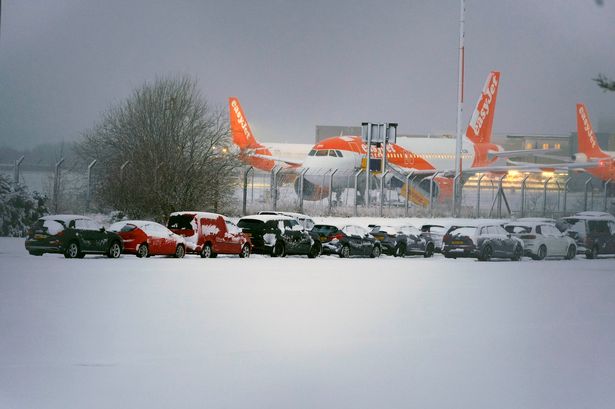The United Kingdom experienced significant travel disruptions on Sunday, December 11, 2022, as heavy snowfall blanketed large swaths of the country. The unseasonal weather brought chaos to airports across the nation, forcing the diversion and delay of numerous flights, stranding passengers, and creating logistical nightmares for airlines. This widespread disruption underscored the vulnerability of the UK’s transportation infrastructure to sudden and severe winter weather. While snow is a regular occurrence in parts of the UK, the intensity and timing of this particular snowfall caught many airports and airlines off guard, leading to a cascading series of problems.
The heavy snowfall began overnight, accumulating rapidly in many areas. This rapid accumulation quickly overwhelmed snow removal crews at airports, leading to runways becoming unusable and aircraft being grounded. The initial delays triggered a domino effect, as subsequent flights were also delayed or cancelled due to the backlog. As the snow continued to fall throughout the day, the situation deteriorated further, with some airports forced to temporarily suspend operations altogether. Passengers were left stranded in terminals, facing uncertainty about their travel plans. Many were forced to spend the night in airports, while others scrambled to find alternative transportation or accommodation.
The impact of the heavy snow extended beyond the immediate vicinity of airports. Road networks were also severely affected, making it difficult for passengers to reach airports or for airport staff to get to work. The treacherous driving conditions added another layer of complexity to the already challenging situation. Public transportation services were also disrupted, further limiting travel options for those affected by the flight cancellations. The widespread disruption highlighted the interconnectedness of the transportation system and the cascading impact that severe weather can have on various modes of travel.
The airlines affected by the snowstorm faced a complex set of challenges. They had to manage the immediate needs of stranded passengers, including providing food, accommodation, and information about rescheduled flights. They also had to grapple with the logistical complexities of rerouting aircraft, rescheduling crews, and managing the backlog of delayed flights. The financial implications of the disruptions were significant, with airlines incurring costs associated with passenger compensation, crew accommodation, and lost revenue. The snowstorm served as a stark reminder of the operational challenges that airlines face in dealing with unexpected weather events.
The heavy snowfall and subsequent travel chaos sparked debate about the preparedness of UK airports and airlines for such weather events. Critics argued that airports should have been better equipped to handle the snowfall, with more robust snow removal capabilities and contingency plans. Some questioned whether airlines had adequately communicated with passengers about the disruptions and provided sufficient support to those stranded. The incident raised broader questions about the resilience of the UK’s transportation infrastructure in the face of increasingly unpredictable weather patterns. Calls were made for improved investment in winter weather preparedness and more effective communication strategies to minimize the impact of future snow events.
In the aftermath of the snowstorm, airports and airlines worked tirelessly to restore normal operations. Snow removal crews worked around the clock to clear runways and taxiways, while airlines scrambled to reschedule flights and reunite passengers with their luggage. The recovery effort was a testament to the dedication and resilience of airport staff and airline personnel. However, the disruption served as a valuable lesson about the importance of preparedness and the need for ongoing investment in infrastructure and communication systems to mitigate the impact of future weather events. The snowstorm underscored the vulnerability of the air travel network to extreme weather and highlighted the need for a more proactive approach to winter weather preparedness.














